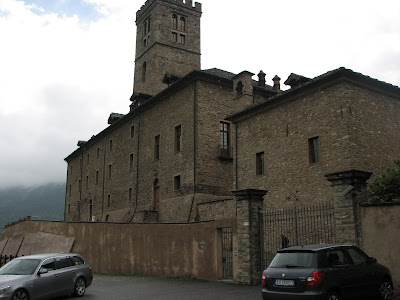Often when we go less-known destinations, or not as famous, we ask ourselves if they will meet our expectations. Infact, Imprimis doesn't have only the “duty” of verifying how beautiful or adequate is the destination we are going to suggest, but also to value the overall offer (es: accommodation, transport, restaurants). The arrival in the region was a pleasant surprise under every aspect. This is a lovely area facing the Adriatic sea, with the Appennini rising at its back. The combo between sea and mountain meant that the region was amongst the first to expose this combination, largely expressed in the culinary tradition, rich of “mare e monti” recepies (mountain and sea): Meat, fish, truffle, mushrooms and cheese often mix in the dishes, and with harmony.
“Le Marche” have in fact 173 kilometers of coast, behind which vast hills immediatly start , characterizing the 70% of the territory, whilst the remaining 30% is mostly mountains. But Le Marche aren’t just cuisine and scenarios, as there is also history, a lot of history, that has its origins all the way back to the Iron Age, when these lands were taken by the “Piceni”, who’s name still lives in many areas here.
It is easy to detect the Roman presence, which influenced and molded this territory during long centuries through the foundation of many cities that flourished in the following hundreds of years.
Weaker the secular power of the Church, which dominated these lands from the sixteenth century. The last two centuries were determined first by Napoleon’s troops, and then by Italian unification.
We can see how “Le Marche” can satisfy many interests: history, art and culture, sea and mountains, an excellent culinary tradition and lots of quality wine. For who doesn’t know the wine from these hills is a naturally gifted wine, due to the particular climate found her, guaranteeing superior taste: thanks to the humidity from the mountains and the mixing effect giving by the sea and its salty winds, the maturation of the grapes is given an “extra” something.
A trip here will be hardly about shopping, nightlife and city-life! But rather a relaxing trip rich in culture and incredible scenarios. Coming from north we passed from Pesaro, medium sized town, influenced in customs by the nearby region called “Romagna”. Pesaro isn’t be the pearl of Romagna,but it is a good base from where visiting a medieval masterpiece, now patrimony of UNESCO: Urbino.
We cannot avoid to mention a religious destination, even a pilgrimage recipient: Loreto. In the gorgeous Basilica is conserved the “Casa di Gesu’” (house of Jesus) inside of which the devotees can admire the famous “Madonna Nera con Bambino”.
The centre-southern region bears the sign of a long feudalism period, leaving behind many suggestive fortresses. Going to restaurants it is certainly another satisfying activity furthermore, you do not have to go through the rural hills to find genuine yet sophisticated: cities such as Ancona, Fano and Ascoli Piceno all have restaurants ran by great local chefs.
In Ancona, some small “trattoria” (family ran restaurants) will likely surprise you with unmatchable fish dishes whilst in Fano you have lots of mentioned “sea and mountain” specialties.
Yet, my heart remains tied with Ascoli Piceno, where, with a small dose of luck, you will be able to eat the handmade, super fresh “Tagliolini d’uovo with black truffle”, followed by a fillet personally grilled by the chef in a eighteen century fireplace, dressed by fresh Porcini mushroom’s heads, directly from the forests of the nearby Appennini.“Le Marche”, an experience worth doing
 |
| Ancona |
 |
| Cathedral of Ancona. Detail |
 |
| Piazza Plebiscito.Ancona |
 |
| Ancient Palace. Ancona |
 |
| Port of Ancona. Detail |
 |
| Central Square.Ascoli Piceno |
 |
| Bell Tower.Ascoli Piceno |
 |
| Fortezza Pia. Ascoli Piceno |
 |
| Rocca Roveresca.Senigallia |
 |
| Foro Annonario.Senigallia |
 |
| Palazzo Ducale.Urbino |
 |
| Urbino.Detail |
 |
| Urbino.Detail |
 |
| Villino Ruggeri.Pesaro |
 |
| The Medusa.Pesaro |
 |
| Cathedral.Pesaro |
 |
| Roman Arch.Fano |
 |
| Cathedral.Loreto.Back Side |
 |
| Cathedral Loreto.Front Side |
 |
| Landscape.Loreto |









































